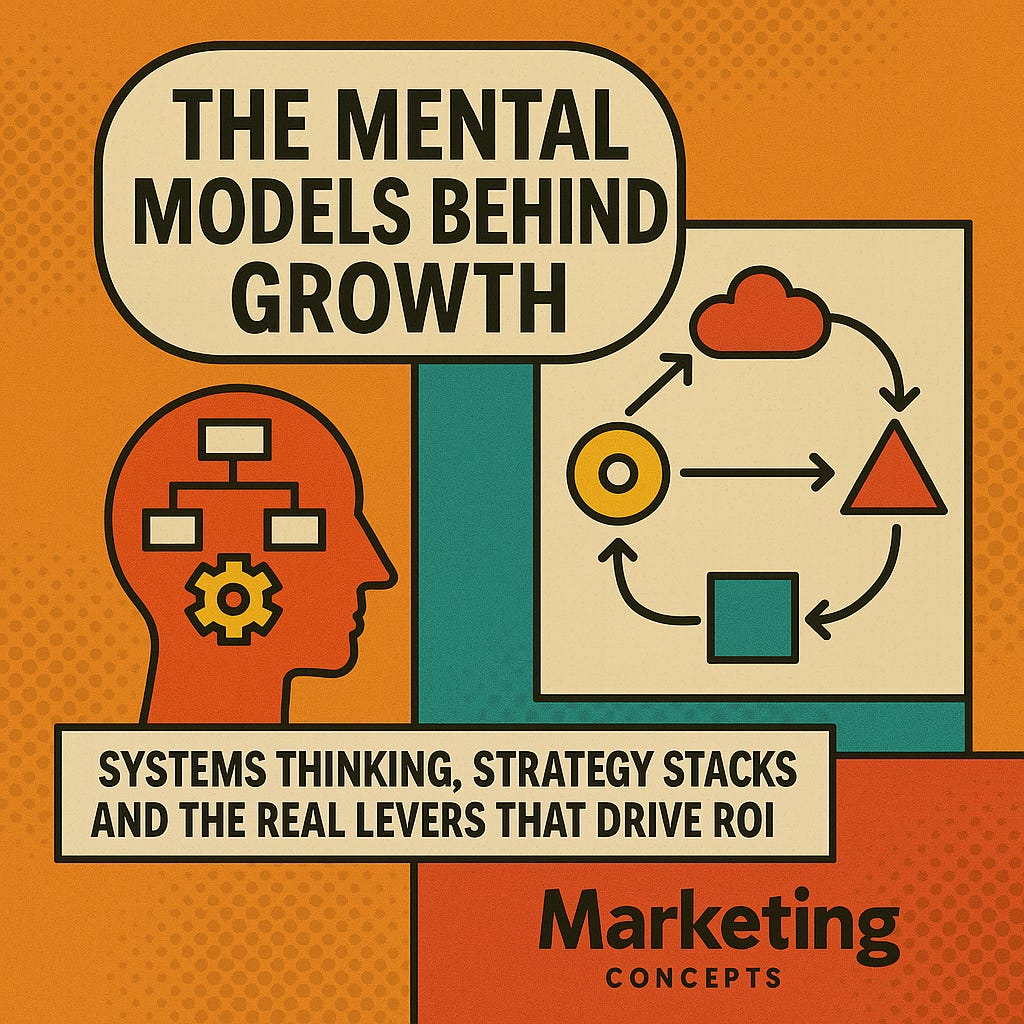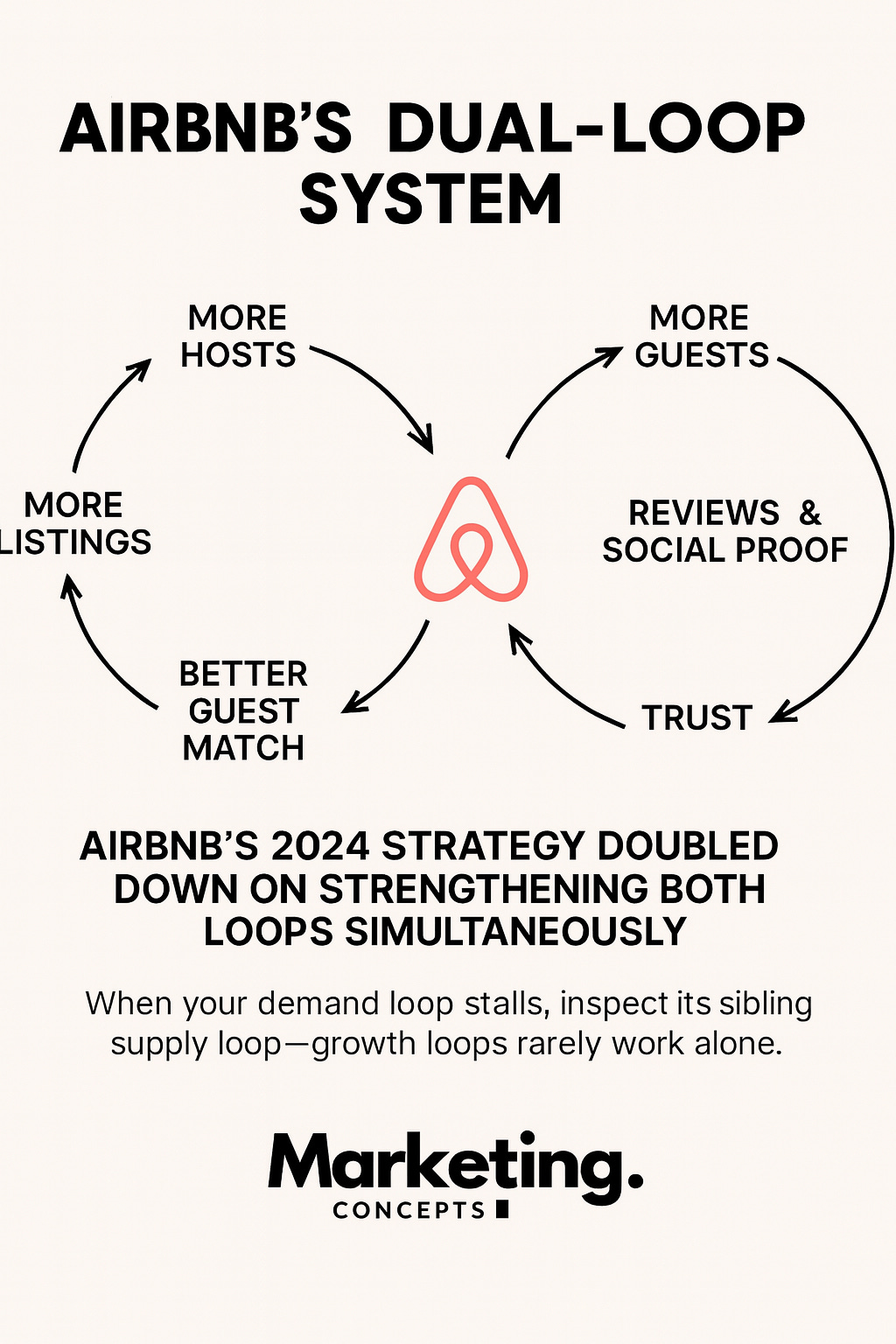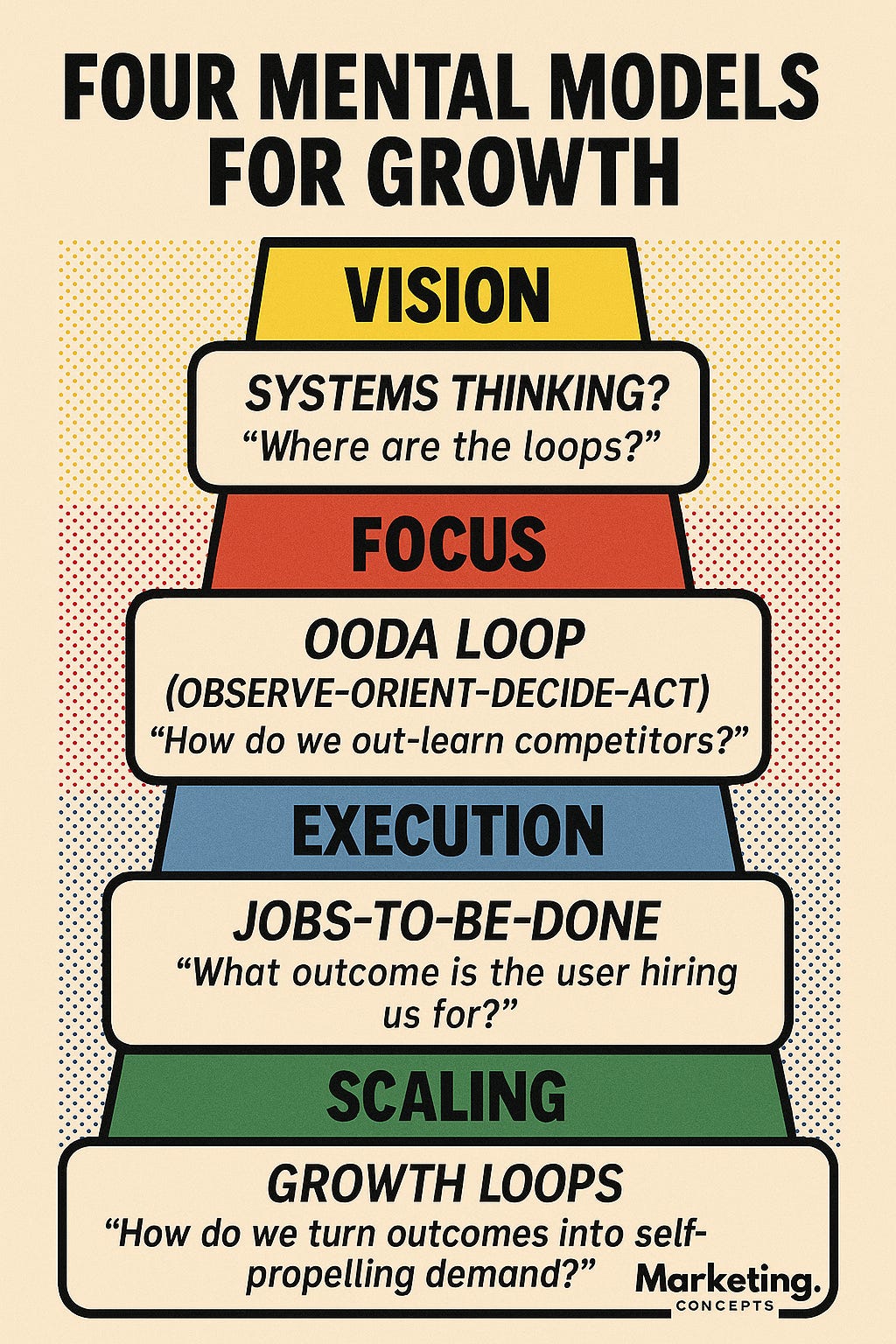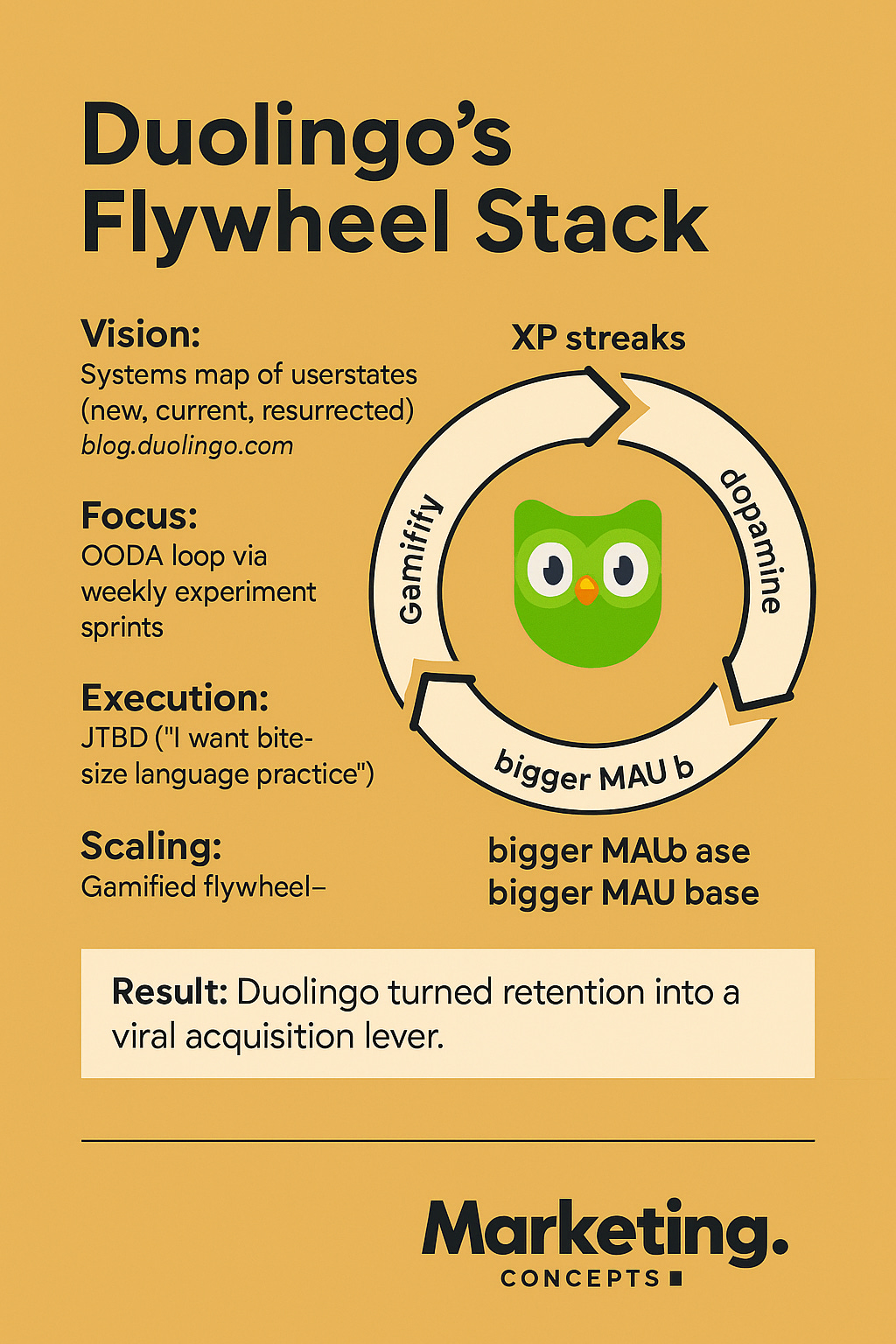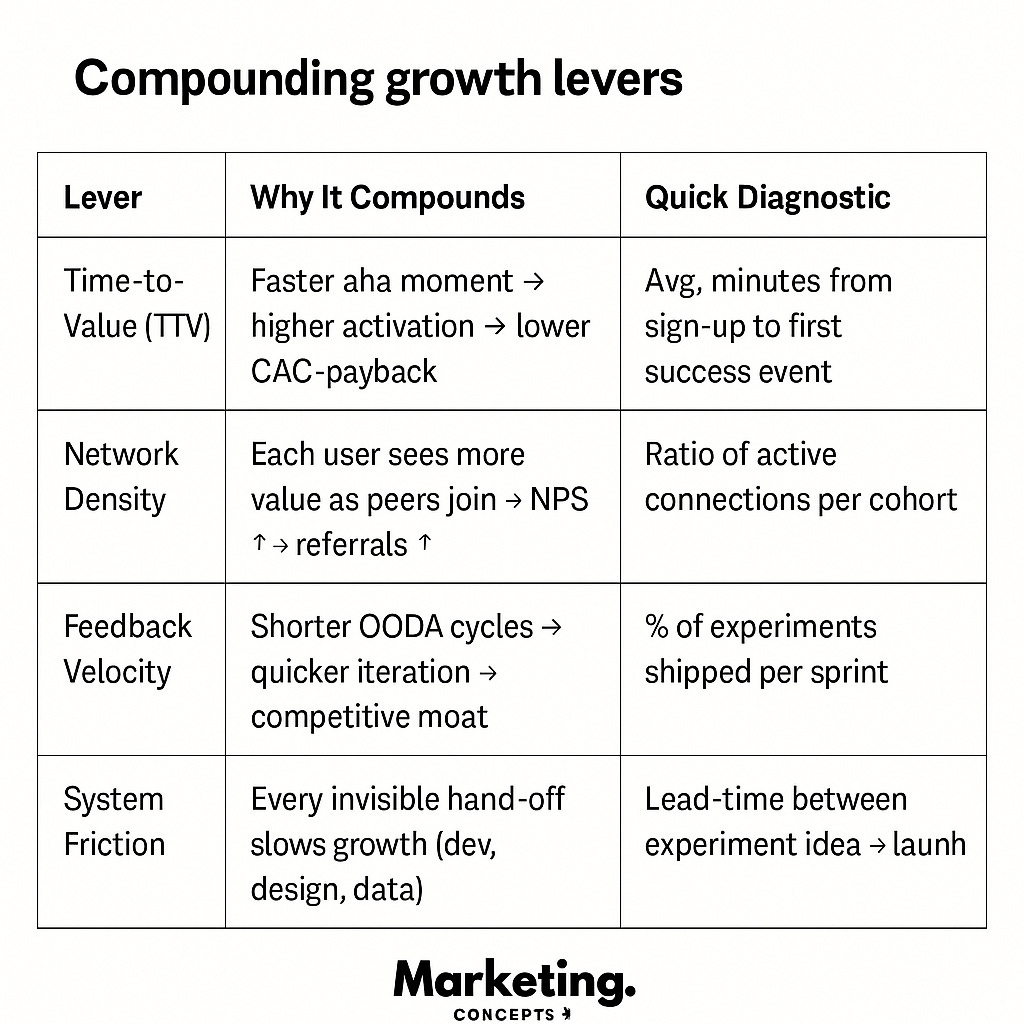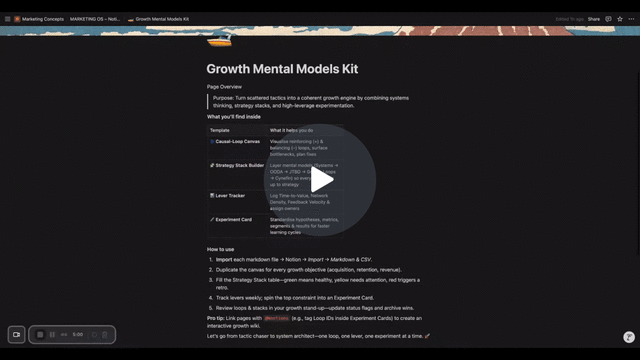The Mental Models Behind Growth
Systems thinking, strategy stacks, and the real levers that drive ROI
In growth meetings we obsess over tactics—bid caps, email cadences, Channel hooks — yet the teams that scale fastest think in models, not hacks. Mental models act like the operating system underneath every growth play:
Systems Thinking (see the whole engine)
Strategy Stacks (layer models like Lego®)
High-leverage Growth Loops (flywheels that compound)
Master these, and tactics click into place.
📊 Stat of the Week
Companies that embed systems thinking into decision-making are 2× more likely to exceed growth targets.
— Forbes Tech Council, March 2025 forbes.com
Systems Thinking: See the Engine, Not the Gear
Systems thinking views growth as an interdependent network—traffic, product, messaging, pricing—rather than a pile of channels.
It forces you to map feedback loops (positive & negative) and second-order effects (unintended wins or losses).
“In the 21st century, systems thinking isn’t an advantage—it’s survival.” forbes.com
How-To
Map the Loops
Draw a quick causal-loop diagram: Traffic → Sign-ups → Social proof → More traffic.
Negative loop: Bad onboarding → Churn → Higher CAC → Budget cuts.Identify Constraints
Use the Theory of Constraints lens: the slowest part of the process holds back growth.Instrument the System
Tag each loop with metrics (e.g., Invite Rate, Activation %, NPS) so you can see which lever is stuck.
Airbnb’s Dual-Loop System
Supply Loop: More hosts → more listings → better guest match → higher booking rate → more host sign-ups.
Demand Loop: More guests → reviews & social proof → trust → more guests.
Airbnb’s 2024 strategy doubled down on strengthening both loops simultaneously qoreups.com.
Take-away: When your demand loop stalls, inspect its sibling supply loop—growth loops rarely work alone.
Strategy Stacks: Lego-ise Your Models
Think of mental models as stackable layers:
Combine layers → create a strategy stack.
How-To
Choose a Base Model (Systems Thinking)
Add a Learning Loop (OODA) to iterate faster.
Bolt on JTBD to anchor messaging.
Install Growth Loops to compound traction.
When stuck, ask: Which layer is missing?
Duolingo’s Flywheel Stack
Vision: Systems map of user states (new, current, resurrected) blog.duolingo.com
Focus: OODA loop via weekly experiment sprints
Execution: JTBD (“I want bite-size language practice”)
Scaling: Gamified flywheel—XP streaks → dopamine → daily return → viral invites ➜ bigger MAU base linkedin.com
Result: Duolingo turned retention into a viral acquisition lever.
The Hidden Levers That Actually Drive ROI
Most marketers pull “spend more on ads” or “write more content.” Real levers sit deeper:
Use Systems Thinking to quantify each lever, then build initiatives against the worst bottleneck.
The Growth Mental-Model Notion Kit
I’ve bundled:
Causal-Loop Canvas – drag-and-drop blocks to map loops
Strategy Stack Builder – checklist for layering models
Lever Tracker – TTV, Network Density & Feedback Velocity dashboards
Comment “Growth Mental Model” to join the thread — then subscribe free to unlock instant access to the Notion Kit
Wrap-Up: From Tactic Chaser → System Architect
Tactics win sprints; systems win seasons.
Strategy stacks mean you always know which mental model to swap in.
Real ROI is unlocked when you diagnose and pull hidden levers—not when you refresh GA4.
Next Week
“Building Your First Growth Loop in 48 Hours—A Field Test.”
We’ll turn one of your loops from whiteboard to production using the Notion kit + a Zapier recipe.



